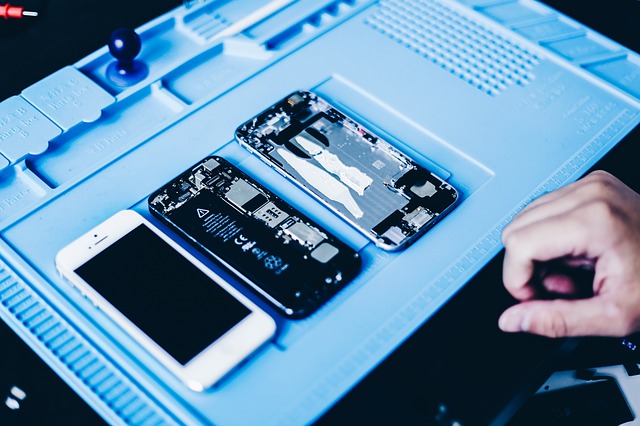Storing Lithium Ion Batteries in the Cold
Oct 26, 2019 Pageview:3472
First introduced in 1991, we now use lithium-ion batteries as the primary power source for most of the electronic devices and equipment we rely on. Devices such as smartphones, tablets, laptops, electric cars, medical facility equipment, etc. are all powered by lithium-ion batteries. The chemistry of lithium batteries has become popular with the various small and large companies because it offers a longer lifespan than the traditional batteries we were used to, and it also offers the end-users a lightweight battery design to enjoy.
While lithium batteries are of benefit to everyone, from the manufacturer of devices to the end-user, there is still a need for the batteries to be tested, so their quality can be ensured. There are storage facilities or warehouses used to store large amounts of lithium-ion batteries, at specific temperatures to ensure the safety of the storage environment.
When not stored properly, these rechargeable lithium-ion batteries used in our mobile and heavy-duty equipment may become hazardous to our health and the general safety of the environment in which it is being used. This is if it even works in the device at all because subjecting a lithium-ion battery to a high temperature more than it can handle is very likely to make the battery malfunction.
If lithium-ion batteries are stored in an environment where the temperature is not suitable for such a battery, the battery may become damaged and no longer be able to function. Attempts to revive the battery may fail if the damage is irreversible.
When winter begins and as usual, the weather becomes colder, a lot of calls start coming from users regarding the behavior of their lithium-ion batteries, how to store them to get the best result and not damage the batteries. It is important to first understand if winter or cold temperature affects batteries and how it affects if it does.
Does cold temperature affect lithium-ion batteries?
The short answer to that question is yes. Batteries are quite like humans, and they work better at room temperature. When you warm up an almost empty or dying battery of a cell phone or a flashlight, that act can provide the battery with extra battery life because of the improved electrochemical response or reaction. This is probably the reason why manufacturers prefer or recommend that batteries are kept at a temperature of about 27°C (or 80°F). When you use your battery at high temperature, the battery performance may be improved, but prolonged usage and exposure to such a temperature is going to reduce the battery life.
As almost all drivers and car users in the cold climate and countries know, using a warm battery to ignite a car starts the engine better than when a cold battery is used. This is the case for almost all the types of batteries on the market today. When batteries get cold, the cold temperature usually increases the battery's internal resistance and thus reduces the battery's capacity. If your battery provides you with 100% capacity at a temperature of 27°C, that same battery will most likely provide you with only 50% when the temperature is reduced to 18°C. The instantaneous reduction in capacity depends on the chemical composition and chemistry of the battery.
The solid polymer dry batteries need to be at a temperature of about 60°C to 100°C to ensure a proper flow of ions and become conductive. This kind of batteries has excelled in the market where fixed energy applications are required in hot climates, especially those places where heat plays more of a catalyst than a drawback. The Built-in heating elements ensure the battery is always ready for use at all times. There is a high cost of these kinds of batteries. The cost and security issues have limited the application of these battery systems. The most common lithium polymer battery makes use of the gelled electrolyte to improve conductivity.
What temperature should lithium-ion batteries be stored at?
The storage temperature recommended for most lithium batteries is 15°C, which is about 59°F. Some of the lithium batteries, however, need to be stored at varying temperatures. Therefore, it is important to study the labels carefully before you go on with the storage of your battery. The state of charge is equally important. You must ensure you keep your lead-acid batteries at full charge before you take them to the storehouse, while your nickel and lithium batteries don’t have to be fully charged. They are best at about 40%. Ensure the state of charge doesn’t go below or too above this threshold.
If there is any occurrence of improper storage, your lithium batteries may become unstable and the excessive heat resulting from that may cause internal damage and potentially cause an outbreak of fire. The cells must be stored with a charge of around 30% and 50%. While cells may be stored completely discharged, the voltage of the cell, however, must not be less than 2.0. On the other hand, the maximum voltage must not exceed 4.1 volts.
Lithium-ion battery for cold weather applications
Temperature is one of the most critical factors in the use of batteries, and it has a significant impact on the performance of lithium-ion batteries. Temperature also limits the use of lithium-ion batteries. Also, the different temperature under which these batteries are used causes different undesirable effects. Accurate measurement of the temperature in which the lithium-ion batteries are used can help in understanding the effects of the temperature on the battery and is important for proper battery management.
As we have established, cold temperatures increase internal resistance in batteries and also reduces the capacity of the battery. All batteries work at optimal capacity when they operate at 20°C or temperatures slightly below 20°C.
The device you use should determine the battery used in it. However, for a good cold-weather experience, lithium iron phosphate batteries may be the best for you. These batteries may even be discharged at temperatures as low as -20°C to 60 ° C. This makes these batteries the most suitable in all weather conditions, especially those in cold temperature applications, such as off-grid solar and RVs.
- Prev Article: Types of Lithium Battery Systems
- Next Article: LiPo Battery Specification Guide
Leave Message
Hottest Categories
-
Hottest Industry News
-
Latest Industry News













